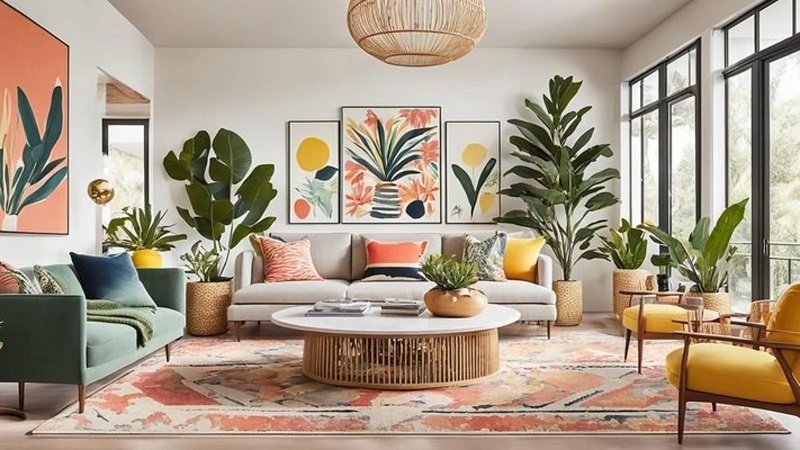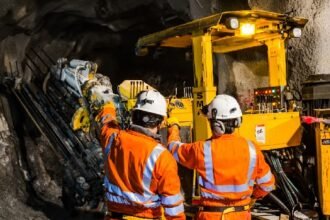Home living isn’t what it used to be. Gone are the days when homes were simply places to eat, sleep, and unwind. Today’s homes are evolving into multifunctional, tech-driven spaces that cater to diverse lifestyles. Whether it’s harnessing smart home automation, prioritizing sustainability, or creating dynamic spaces that adapt to your needs, the modern home is a reflection of both innovation and individuality.
Smart Home Technology: Making Daily Living Easier
Imagine controlling your home with just your voice or a tap on your smartphone. That’s the power of smart home automation, and it’s drastically changing how we interact with our living spaces.
Key Smart Home Features to Incorporate
- Voice Assistants: Whether it’s Amazon Alexa, Google Assistant, or Apple HomeKit, voice-controlled systems add convenience. You can play music, adjust lighting, or even create shopping lists hands-free.
- Smart Lighting and Climate Control: Optimize your energy usage with smart bulbs and thermostats like Philips Hue or Nest. These systems allow you to set schedules, dim lights, and heat or cool rooms remotely via mobile apps.
- Security at Hand: Smart home security systems, such as Ring or Arlo, keep your home safe with features like motion detection, live video feeds, and smartphone alerts.
Benefits of Smart Home Automation
- Save time and energy by automating routine tasks.
- Create a more secure living environment.
- Increase your home’s efficiency with optimized energy usage.
Pro Tip: Start by integrating one or two smart devices into your home and gradually expand as technology integrates seamlessly into your routine.
Sustainable Living: Eco-Friendly Practices for the Home
With awareness of environmental issues growing, many homeowners are adopting sustainable living practices to reduce their footprint.
Simple Eco-Friendly Home Ideas
- Solar Panels: Although a higher upfront cost, solar panels drastically lower electricity bills in the long run and reduce reliance on nonrenewable resources.
- Rainwater Harvesting: Install rain barrels to capture and reuse water for gardening or cleaning purposes.
- Energy-Efficient Appliances: Look for ENERGY STAR-rated refrigerators, washers, and dishwashers that use less power and water without compromising performance.
The Rise of Biophilic Design
The biophilic design focuses on reconnecting humans with nature. This can include incorporating indoor plants, natural materials like wood and stone, and maximizing natural light. Besides being eco-friendly, this approach promotes mental well-being.
Why Go Green?
- Contribute to environmental conservation by lowering your carbon footprint.
- Save money in the long run through reduced utility bills.
- Improve resilience against resource shortages, such as water or energy.
Sustainability may start with small steps, but its impact on your day-to-day life—and the planet—is immeasurable.
Multi-Functional Spaces: Maximizing the Use of Every Room
The modern lifestyle places a premium on homes that work smarter, not harder. Multi-functional spaces are the solution, offering flexibility and maximizing utility.
Example Transformations to Consider
- Guest Bedroom to Home Gym: Keep a Murphy bed for occasional guests but design the space with exercise equipment that folds away when not in use.
- Living Room Meets Work Spot: A stylish, fold-out desk can help you create a mini home office in your living room without compromising aesthetic value.
- Dining Area Plus Study Nook: Use modular furniture or shelving to have one corner as a dining space while the other becomes a secondary workstation.
Advantages of Multi-Functional Spaces
- Make every square inch of your home count, particularly in smaller apartments.
- Adapt spaces to suit changing needs, such as shifting from entertaining guests to focusing on productivity.
- Keep your home organized with clever storage solutions like convertible furniture or built-in cabinetry.
Home Office Redesign: Adapting to Remote Work
With remote work becoming a permanent feature for many, your home office must reflect both professionalism and comfort. If you’re struggling to focus on your current setup, it may be time for a redesign.
Tips for Building a Functional Home Office
- Ergonomic Furniture: Invest in an adjustable office chair and a sit-stand desk to avoid common physical strains.
- Tech Essentials: Reliable high-speed internet, an external monitor, and smart lighting are non-negotiables for productivity.
- Personal Touches: Add decor, plants, and art that inspire you without overwhelming the workspace.
Benefits of a Well-Designed Home Office
- Increased productivity by reducing distractions.
- Improved physical health with ergonomic setups.
- A professional, polished space for video calls and meetings.
Start small. Even transforming a basic desk in your living room with storage shelves and better lighting can make a huge difference.
Seek Professionals for Your Next Home Redesign
While DIY projects are a great way to personalize your living space, some upgrades require professional expertise. For major renovations or installations, it’s best to consult with licensed contractors or interior designers.
Finding the Right Professionals for Your Project
- Research and Referrals: Read reviews online and ask friends and family for recommendations.
- Interview Multiple Candidates: Compare quotes and portfolios from different professionals before making a decision.
- Communication is Key: Clearly communicate your goals, budget, and preferences to ensure you’re on the same page before starting the project.
Whether you’re incorporating sustainable living practices, creating multi-functional spaces, or incorporating smart home automation, some professionals can assist you, like those in Salt Lake City, to achieve your desired home design. The possibilities for creating a modern and efficient living space are endless with the right resources and mindset.
The Future of Home Living: Predictions and Innovations
The evolution of home living doesn’t stop here. Futuristic innovations are promising to redefine how we will experience our homes in the coming decades.
Trends to Watch
- AI Integration in Smart Homes
Devices will sync more intelligently, making decisions for you. For instance, your home might automatically close blinds, lower the thermostat, and dim the lights when it senses you’re about to start a movie.
- Energy Self-Sufficiency
Home designs are expected to be sustainable by default—think homes that generate their power, recycle water and seamlessly integrate with electric vehicles.
- Health-Oriented Spaces
Post-pandemic focus on health may lead to homes equipped with advanced air filtration, personalized HVAC systems, and spaces that promote better physical and mental well-being.
Combining adaptability, sustainability, and technology, the future homes will cater to every unique need while being seamlessly integrated with advanced living solutions.
Conclusion
Now that you know the latest trends, it’s time to apply them to your own home. Remember, even small changes can make a big impact on both your quality of life and the environment. So why wait? Start making your dream home a reality today! Happy designing!






